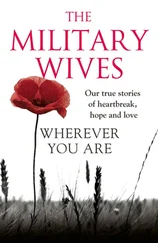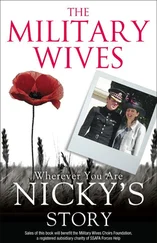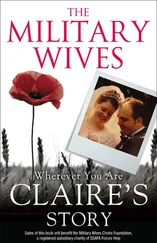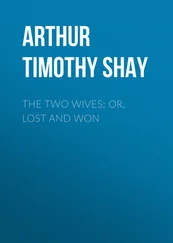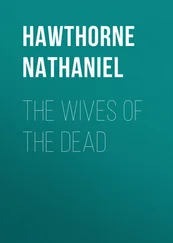THOUGH NO CAMERAS were allowed at Los Alamos back when we arrived during the war, a few of us brought two cameras and only gave the Army one. And after the war we had these images developed—our children as toddlers, in a row of four, with their shirts off, splashing in the mud; our husbands standing at the top of a mesa with a walking stick they picked up on a hike, our husbands with their strong thighs and goofy smiles; and us, on the horses, our heads tilted back in laughter.
WHO WERE BEFORE the war was still who we were during, and after. Somewhere inside we were still twenty-five, still feisty, emboldened, a riot.
BUT WE WERE changed.
WE LEFT AND lectured on atomic energy. We left and wrote autobiographies about life on the Hill. In our memoirs we reported that at Los Alamos there were no unemployed people, no in-laws, no invalids, no poor, and no sidewalks. Our memoirs suggested we knew nothing about what our husbands were building and we were accused of exaggerating how little we knew. But if other wives knew something, they did not tell those secrets to the rest of us, mostly.
WE LEFT AND many things turned atomic: there was talk of nuclear power generators to replace coal and oil, and that we could sanitize our vegetables by irradiating them. Home furnishings became atomic, too—we bought clocks with rays and spheres showing the path of electrons around the nuclei of atoms.
WE LEFT AND founded organizations that opposed nuclear weapons. We continued atomic research, we become social workers, we became grandmothers, we became blacklisted. From an essay Robert published in the Bulletin of Atomic Scientists many years later we learned what had happened that Christmas Eve we saw him leaving in a rush: when it became clear that the Germans had abandoned their bomb project, and after overhearing the General say the bomb was being built to show Russia what the U.S. could do, Robert asked permission to leave and return to Britain. He became the only scientist to leave the project for reasons of conscience. Robert asked in his essay, as we also wondered: Why did others not leave, too?
OUR HUSBANDS WERE curious. They wanted to know if their theoretical predictions could become a physical reality. They thought thousands of lives would be saved by a quick end to the war. Or perhaps they did not want to take a position because they feared how it might negatively affect their careers. Robert left and used his knowledge of physics to research the biological effects of radiation. He left and argued that all scientific research should be for the benefit for humanity, and that scientists cannot keep scientific curiosity and moral implications separate no matter how difficult it might be to predict how such discoveries might later be used.
OUR HUSBANDS FLEW to the Marshall Islands and we called them the Bikini scientists. A navy official told Chief Juda, We are testing these bombs for the good of mankind, and to end all world wars . Juda understood the word, mankind , from the Bible and replied, If it is in the name of God, I am willing to let my people go . Marshallese were told they would be able to return after the bombs were dropped but their homes, bicycles, and bathtubs became radioactive. Though they could not return, the radioactivity was fodder for scientific research.
MEANWHILE, WE WERE featured in Mademoiselle . We went to work for the FBI. We wrote textbooks, led high school physics programs, became president of women’s universities, divorced. We made pineapple upside-down cake for the first time in years.
WE LEFT AND moved to places where air raid sirens blared, where we dropped and covered, where we feared someone else would use what our husbands first developed on us and we practiced drills to move our families quickly into nuclear fallout shelters.
WE LEFT AND said the Hill was an anthill and the bomb was its queen. But many of us told everyone, when we got back to civilian life, There was no crime at all in Los Alamos. We all kept our doors unlocked . It was the safest place to raise a family.
WE LEFT HAPPY, we left relieved, we left thinking we had been a part of something unique, we left with doubts about our husbands, or about ourselves, or our country, or all of these, or none of it. We left wanting most what we had once had in the middle of the howling night, our friends: Louise, Starla, Margaret, Ingrid. We left pregnant, we left tired, we left, in some ways, just as we arrived: dusty and in need of a shampoo.
Thank you to Julie Barer, who saw the project’s heart and was essential in opening it up. Thank you to Nancy Miller, for your trust in the book and for those few, but exacting, suggestions. You two together, along with the teams of Barer Literary and Bloomsbury, have created the dream experience for a first book.
Thank you George Gibson, Alexandra Pringle, Helen Garnons-Williams, Summer Smith, Cristina Gilbert, Patti Ratchford, Lea Beresford, Nikki Baldauf, Elizabeth Van Itallie, and Emily DeHuff. Thank you William Boggess, Gemma Purdy, and Leah Heifferon. Thank you Heather McClenahan, Rebecca Collinsworth, and all of those involved with the Los Alamos Historical Society for honoring and archiving so many lives at Los Alamos. Thank you Jane Viste, who after a reading of mine probably most focused on the aesthetics of Cherenkov radiation, expressed interest in these scientists’ wives and thus moved my attention.
Several books provide inspiration for this project, among them: Patrik Ouredník’s Europeana: A Brief History of the Twentieth Century , Juliana Spahr’s The Transformation , Virginia Woolf’s Orlando . More than several books compile a brief bibliography of Los Alamos or the period: Phyllis K. Fisher’s Los Alamos Experience , Jane Wilson and Charlotte Serber’s Standing By and Making Do: Women of Wartime Los Alamos , Eleanor Jette’s Inside Box 1663 , Bernice Brode’s Tales of Los Alamos: Life on the Mesa 1943–1945 , Leona Marshall Libby’s The Uranium People , Laura Fermi’s Atoms in the Family , Emily Yellin’s Our Mothers’ War , Studs Turkel’s “The Good War” , Jennet Conant’s 109 East Palace: Robert Oppenheimer and the Secret City of Los Alamos , Jon Hunner’s, Inventing Los Alamos: The Growth of an Atomic Community , and Edith Warner’s In the Shadow of Los Alamos: Selected Writings .
Thank you to my family, both here and gone. Thank you, Dr. Hall and the infinite empathy of the maternity ward night shift at Swedish.
Thank you to the late Elspeth Pope for seeing me fit for residency at Hypatia-in-the-Woods when I had just started this project, and thanks to the University of Washington in Tacoma for a Cascadia home. Thank you to the University of Denver and Washington University in St. Louis, for the time to write and the community to write within.
Thank you to my teachers, who are my friends, and my friends, who are my teachers: Shena McAuliffe, Jesse McCaughey, Jen Denrow, Sara Witt, Yanara Friedland, Poupeh Missaghi, Joe Lennon, Sarah Vap and her Salish Sea Workshop, Todd Fredson, Eliana Schonberg, Rachel Sullivan Adams, Molly Langmuir, Cynda Collins Arsenault, Brigid McAuliffe, Mary Jo Bang, Kathryn Davis, Laird Hunt, Eleni Sikelianos, Selah Saterstrom, Adam Rovner, and Brian Kitely.
Thank you to my husband, Jerritt Collord.
TaraShea Nesbit was born in Dayton, Ohio, one of the lesser-known Manhattan Project locations. Her writing has been featured in the Iowa Review , Quarterly West , Hayden’s Ferry Review , and other literary journals. She teaches creative writing and literature at the University of Denver and is the nonfiction editor of Better: Culture & Lit . A graduate of the M.F.A. program at Washington University in St. Louis, TaraShea is currently pursuing a Ph.D. in literature and creative writing at the University of Denver.
Читать дальше





